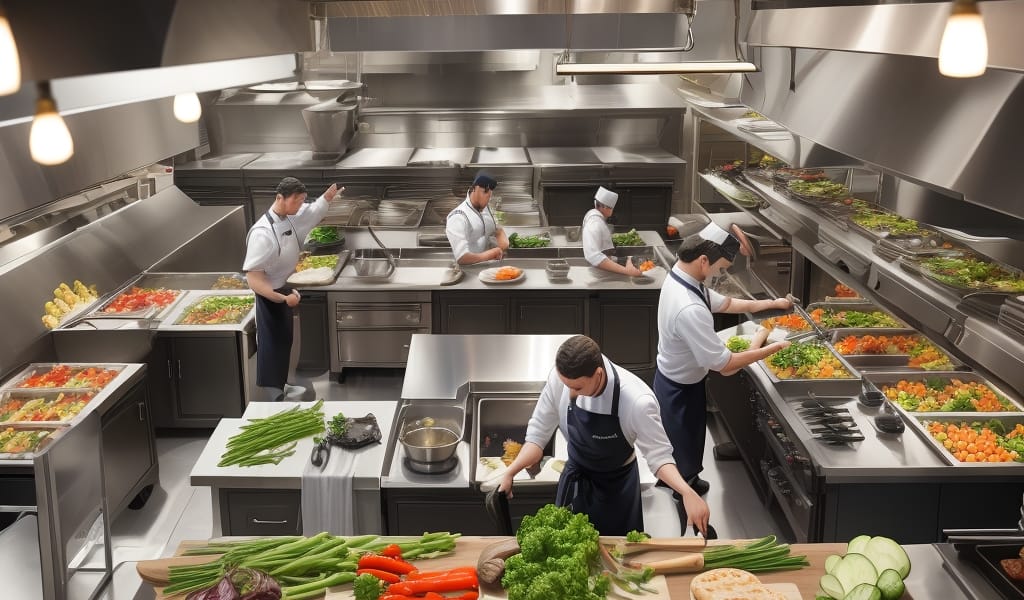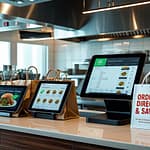Key Takeaways:
- Assess your restaurant’s scalability by observing steady profits and increasing customer demand over time.
- Look for a strong, reliable team that can manage the current operations even in your absence as a sign of readiness for expansion.
- Confirm your financial stability by ensuring you have sufficient funds for expansion without jeopardizing your existing outlet.
- Identify a suitable location for your next outlet, considering population density, competition, and customer accessibility.
- Review your restaurant’s system and processes for efficiency, as streamlined operations are a key sign of readiness for expansion.
Are You Ready for Expansion? 7 Signs That Say Yes
Know when it’s time to open your next outlet
Expanding your restaurant can be an exciting yet daunting milestone. Growth presents significant opportunities for increased brand recognition, profitability, and market share. However, knowing precisely when to scale up is crucial—timing can make the difference between successful expansion and costly setbacks. How do you determine if your restaurant is truly ready for additional locations? Recognizing these clear signs can help ensure your restaurant expansion journey is a rewarding one.
1. Consistent Profitability and Financial Stability
The foundation of any successful restaurant expansion lies in financial health. Before considering new locations, assess whether your current outlet consistently generates profit. Ideally, your restaurant should demonstrate steady financial growth over a sustained period, typically at least 12-24 months, to justify scaling.
Examine your financial statements closely, focusing on:
- Positive and consistent cash flow
- Healthy profit margins
- Low levels of debt
- Sufficient savings or capital for expansion investments
For instance, Shake Shack carefully evaluated its financial performance and cash flow before expanding from a single New York kiosk into a global brand. By ensuring financial stability first, they mitigated risks associated with rapid growth.
2. Strong Demand Exceeding Current Capacity
Another clear indication that you’re ready for restaurant expansion is when customer demand significantly outpaces your current operational capacity. If your tables are regularly full, wait times become extensive, or reservations consistently sell out, it’s likely your restaurant is primed for expansion.
Evaluate signs of excess demand such as:
- Consistent long wait times during peak hours
- Frequent customer inquiries or requests for new locations
- Inability to accommodate reservations or events due to limited space
Consider the case of popular burger chain Five Guys, which leveraged consistently high customer demand to successfully expand nationwide. Recognizing and responding to this demand allowed them to scale effectively, adding locations without compromising quality or customer satisfaction.
3. Proven and Scalable Operational Systems
Expansion requires replicable systems that maintain quality, consistency, and efficiency across multiple locations. If your restaurant has well-documented procedures, standardized recipes, and streamlined operations, you’re well-positioned to scale successfully.
Assess your operational readiness by reviewing:
- Clear training manuals and employee onboarding processes
- Standardized recipes and quality control measures
- Effective inventory management and supplier relationships
- Reliable point-of-sale and technology systems
Chipotle Mexican Grill exemplifies the importance of scalable systems. Their standardized approach to menu preparation, employee training, and supply chain management facilitated rapid expansion while preserving product quality and brand consistency.
4. Strong and Capable Team
Your restaurant’s success relies heavily on people. Expansion demands a robust team of skilled, loyal, and motivated employees who can manage new locations effectively. Before opening additional outlets, ensure your existing team demonstrates readiness and has the depth necessary to support growth.
Key indicators include:
- Employees capable of stepping into managerial roles at new locations
- Low staff turnover rates indicating healthy company culture
- Solid training processes that facilitate team development
Starbucks’ expansion success can be attributed in part to its focus on employee development. By investing heavily in training programs and career growth opportunities, Starbucks built a workforce capable of supporting rapid global expansion.
5. Clearly Defined Brand and Market Position
A distinct, well-defined brand identity and market position can significantly influence your expansion success. Clear branding differentiates you from competitors and makes replicating your restaurant’s concept easier in new locations.
Review your restaurant’s market position by analyzing:
- Customer perception and brand loyalty levels
- Clearly defined unique selling points (USPs)
- Consistent branding across marketing materials and customer experiences
Consider the example of In-N-Out Burger, which successfully expanded across multiple states by clearly communicating their brand ethos of fresh, high-quality ingredients and simple menu offerings. Their consistent market positioning facilitated customer acceptance and loyalty in new areas.
6. Positive Industry and Market Conditions
External factors also play a critical role in determining expansion readiness. Favorable market conditions, stable economic environments, and positive industry trends can substantially increase the likelihood of successful growth.
Evaluate external factors such as:
- Market research indicating demand for your restaurant concept in new locations
- Favorable economic indicators like employment rates and disposable income trends
- Low market saturation levels and limited direct competition
Sweetgreen capitalized on growing consumer demand for healthier, locally sourced fast-casual dining options. By closely aligning their expansion strategy with these favorable industry trends, they achieved rapid growth and market presence.
7. Access to Adequate Resources and Capital
Expansion demands significant resources beyond financial capital. Access to funding, reliable suppliers, suitable real estate, and strategic partnerships are essential components for successful growth.
Ensure you have the resources and infrastructure necessary by confirming:
- Available capital or financing options to fund expansion costs
- Reliable supplier networks capable of handling increased volumes
- Real estate availability in targeted expansion areas
- Established partnerships or industry connections to support growth
Shake Shack’s careful selection of premium real estate in high-traffic locations was instrumental in their successful expansion strategy. They leveraged investor capital and strategic partnerships to access prime locations, laying the groundwork for sustained growth.
Conclusion
Deciding to expand your restaurant is an exciting opportunity that requires thorough assessment and careful planning. By recognizing these seven key signs—consistent profitability, strong customer demand, scalable systems, a capable team, clear branding, favorable market conditions, and adequate resources—you can confidently determine your restaurant’s readiness for growth. Evaluate each factor objectively, identify areas for improvement, and position your restaurant wisely to capitalize on expansion opportunities. When approached strategically, scaling your restaurant can significantly enhance your brand, profitability, and long-term success.






Comments
Be the first to comment on this article.